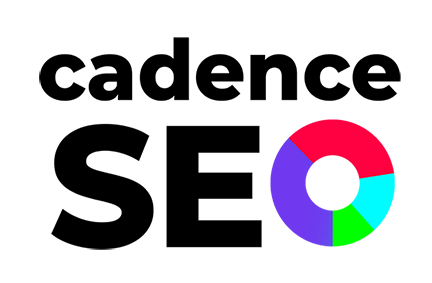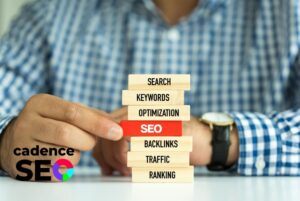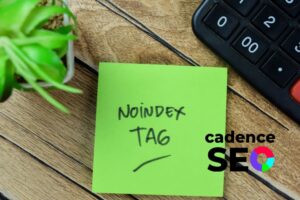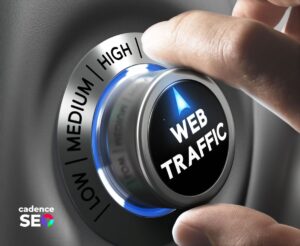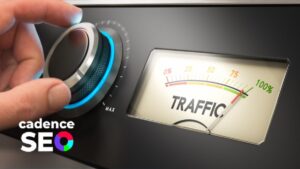With billions of users, social media has emerged as a powerhouse for businesses seeking to connect with their target audience. Social media platforms provide enterprises with a wide range of visually appealing formats to showcase their brand, products, and services in easy and convenient ways for users to experience. From the second quarter of 2022 to the second quarter of 2023, click-through rates for social networks reached approximately 1.3%. Compared to the 2.5% average click-through rate of emails, that 1.3% is quite substantial! While organic reach remains essential, paid advertising on social media has become a game-changer for those looking to amplify their online presence and drive tangible results.
What is Paid Advertising on Social Media?
Organic website traffic relies on algorithmic tools and techniques to bolster a brand’s digital presence. In contrast, paid advertising on social media involves businesses paying for promotion on various social media platforms. Most social media platforms like Facebook, Instagram, and X offer CPM and CPC pricing models. Cost per “mille” (CPM) charges a certain amount based on every 1,000 impressions an ad receives. Cost Per Click (CPC) charges an advertising fee every time a consumer clicks on your ad. These advertisements are pretty easy to identify for users as they’ll either have some form of tag that reads “sponsored” or “ad” on them. For instance, on Facebook, paid media often comes up as sponsored content, whereas Instagram users must label their ads as an ad in the comments or elsewhere on the post. Paid advertising strategies use a variety of formats, including sponsored posts, display ads, video ads, and carousel ads. Each form is tailored to suit the unique features of different social media platforms.
Which Social Media Platforms are Best for Paid Advertising?
Using a social media platform is a great way to connect with consumers. They’re convenient, user-friendly mediums for your target audience to experience your brand’s great products and services. Different platforms cater to diverse demographics and industries, so aligning your strategy with your target audience is essential. Here are some popular platforms and their strengths in the realm of paid advertising:
With over three billion users, Facebook is one of the oldest and most popular platforms in use today. Enterprises have a great opportunity to leverage paid advertising here. Facebook allows you to seamlessly integrate “sponsored” tags of paid ads into a user’s feed. Its wide user base provides diverse demographics. The advanced targeting options of Facebook enable you to hone in on your audience based on criteria such as job description, location, interests, previous activities, and more.
Hot on the heels of Facebook, Instagram is rapidly approaching two and a half billion users. Instagram will do nicely for enterprises looking for an excellent visual advertising platform. It’s all about videos and images, making it a great way to showcase your products and services.
Instagram ads allow you to link directly to a landing page or product page, giving your target audience a streamlined, user-friendly experience with your brand. That could translate into a huge boost for your website traffic and conversions. With its visually appealing content, Instagram is a big hit among younger demographics.
X (formally Twitter)
Formerly known as Twitter, X has around 550 million active users. One of the biggest appeals of X is its ability to be on the front lines of trending topics. A lot of users get breaking news in real-time from X, which is also true for the latest launch of a brand’s products, services, events, or promotions. While 40% of X users are between the ages of 18 and 29, a strong 27% are between the ages of 30 and 49, giving enterprises a fairly wide demographic reach. The paid content you create will appear as “Follower Ads” and/or “Promoted Ads.”
What are the Benefits of Paid Advertising on Social Media?
Enhanced Targeting and Reach
Paid advertising allows businesses to target specific demographics, interests, and behaviors, ensuring your content reaches the most relevant audience. It also expands your reach beyond your current followers, tapping into potential customers who may not have discovered your brand organically.
Measurable ROI
Social media advertising platforms provide robust analytics and metrics, allowing businesses to track the performance of their campaigns in real time. Insights into impressions, clicks, conversions, and engagement help refine strategies for better ROI.
Increased Brand Visibility and Recognition
Paid advertising ensures your brand is prominently featured in users’ feeds, increasing visibility and building brand recognition. Consistent exposure helps establish your brand as a trusted authority in your industry.
Customizable Budgets and Cost-Effective Options
Social media advertising is adaptable to budgets of all sizes, making it accessible for small businesses and startups. Pay-per-click (PPC) models mean you only pay when users interact with your content, ensuring cost-effectiveness.
Engagement and Interaction
Social media ads encourage user engagement through likes, shares, comments, and clicks. Interactive ad formats, such as polls and quizzes, enhance user participation and foster a sense of community around your brand.
Adaptable Ad Formats
Each social media platform offers a variety of ad formats suitable for different content types and business goals. Businesses can experiment with image ads, video ads, carousel ads, and more to find the most effective format for their audience.
Is Social Media Paid Advertising the Right Fit for My Business?
While the benefits of paid advertising on social media are vast, it’s crucial to assess whether it aligns with your business goals and target audience. Consider the following factors:
Audience Demographics
Analyze the demographics of your target audience and choose platforms that align with their preferences.
Budget Constraints
Evaluate your budget and choose a platform that offers cost-effective options while still reaching your desired audience.
Content Suitability
Assess the nature of your products or services and determine which platforms support the most effective ad formats for your content.
Marketing Objectives
Clearly define your marketing objectives and choose platforms that align with your goals, whether it’s brand awareness, lead generation, or sales.
If you’re interested in implementing paid advertising into your digital marketing strategy, CadenceSEO can help! Cadence is a full-service digital marketing agency and consultancy that offers a wide range of SEO tools and techniques to increase your brand’s visibility. If you’d like to hear more about how paid advertising can propel your business, contact us for a free consultation today!
